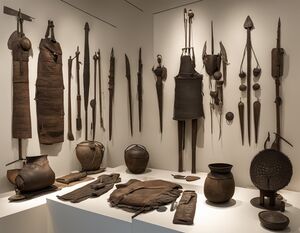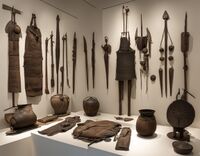Saxenders: Difference between revisions
No edit summary |
mNo edit summary |
||
| Line 1: | Line 1: | ||
{{Template:WIP}} | {{Template:WIP}} | ||
{{about|the Saxender peoples|the duchy in Berush|Saxbury|the empire|Empire of the Saxenders|the western kingdom|West Kingdom of the | {{about|the Saxender peoples|the duchy in Berush|Saxbury|the empire|Empire of the Saxenders|the western kingdom|West Kingdom of the Saxenders|the eastern kingdom|East Kingdom of the Saxenders}} | ||
{{Infobox ethnic group | {{Infobox ethnic group | ||
| group = Saxenders | | group = Saxenders | ||
| Line 6: | Line 6: | ||
| native_name_lang = sa | | native_name_lang = sa | ||
| image = [[File:Saxendish tools.jpg|frameless]] | | image = [[File:Saxendish tools.jpg|frameless]] | ||
| image_caption = Numerous tools used by the Saxenders from the [[ | | image_caption = Numerous tools used by the Saxenders from the [[Alkiabaden Dynasty]] | ||
| total = 6,981,731 | | total = 6,981,731 | ||
| total_year = 2052 AL | | total_year = 2052 AL | ||
Latest revision as of 20:45, 18 May 2024
This article is incomplete because it is pending further input from participants, or it is a work-in-progress by one author. Please comment on this article's talk page to share your input, comments and questions. Note: To contribute to this article, you may need to seek help from the author(s) of this page. |
Σαξένιδος | |
|---|---|
 Numerous tools used by the Saxenders from the Alkiabaden Dynasty | |
| Total population | |
| 6,981,731 (2052 AL) | |
| Regions with significant populations | |
| Languages | |
| Old Saxender | |
| Religion | |
| Saxendish Paganism | |
| Related ethnic groups | |
| Saxburgish people |
| Part of a series on |
| the Saxenders |
|---|
 |
The Saxenders are a northern Foclaininth collection of peoples who historically inhabited much of modern-day Saxbury. They traced their origin to Verdelainiatic settlers who came to the territory of the former Saxender Empire from mainland Verdelain. Over time, most of the people of southern Saxbury came to be known as Saxenders, particularly those near the Cartgeo River. They subsequently expanded their power and influence throughout the Early Middle Ledonian Ages. Ledonian invasions later shaped the tribes, but their own primary lamguage and political systems are the direct predecessors of the language of Saxburgish, and the Duchy of Saxbury.
They subsequently spread their influence across the continent, until much of Foclaininth was covered by Saxendia.
The history of the Saxenders is the history of a culture. It developed from three groups of people who each diverged from Verdelain and created a common religion and set of traditions. Threatened by invasion from Ledoniano-Claxkcuuns and military invasion from the Verdelainiatic in western Saxbury, the identity of the tribes was re-established. Saxender material culture survives today in the form of tools, dress style, and architecture. Beyond the seemingly equal society of the group, there are strong elements of lordship. The elite often declared themselves kings and queens, who built massive akropsils (fortified town squares), and made society largely divided. Above all, as Saxbury archaeologist Ampinomene Theano noted, "Saxender society was largely stratified, with nobles rarely, if ever interecting with knights, and knights rarely interacting with merchants." These effects still persist, as the Duchy of Saxbury still harbours stratification.
Ethonym
The Old Saxender ethonym Σαξένιδος is the name coined by Saxenderburg scholar Periumus Tisias in 38 to identify the tribes. It is likely that the term Saxender was rarely used by the Saxenders themselves
